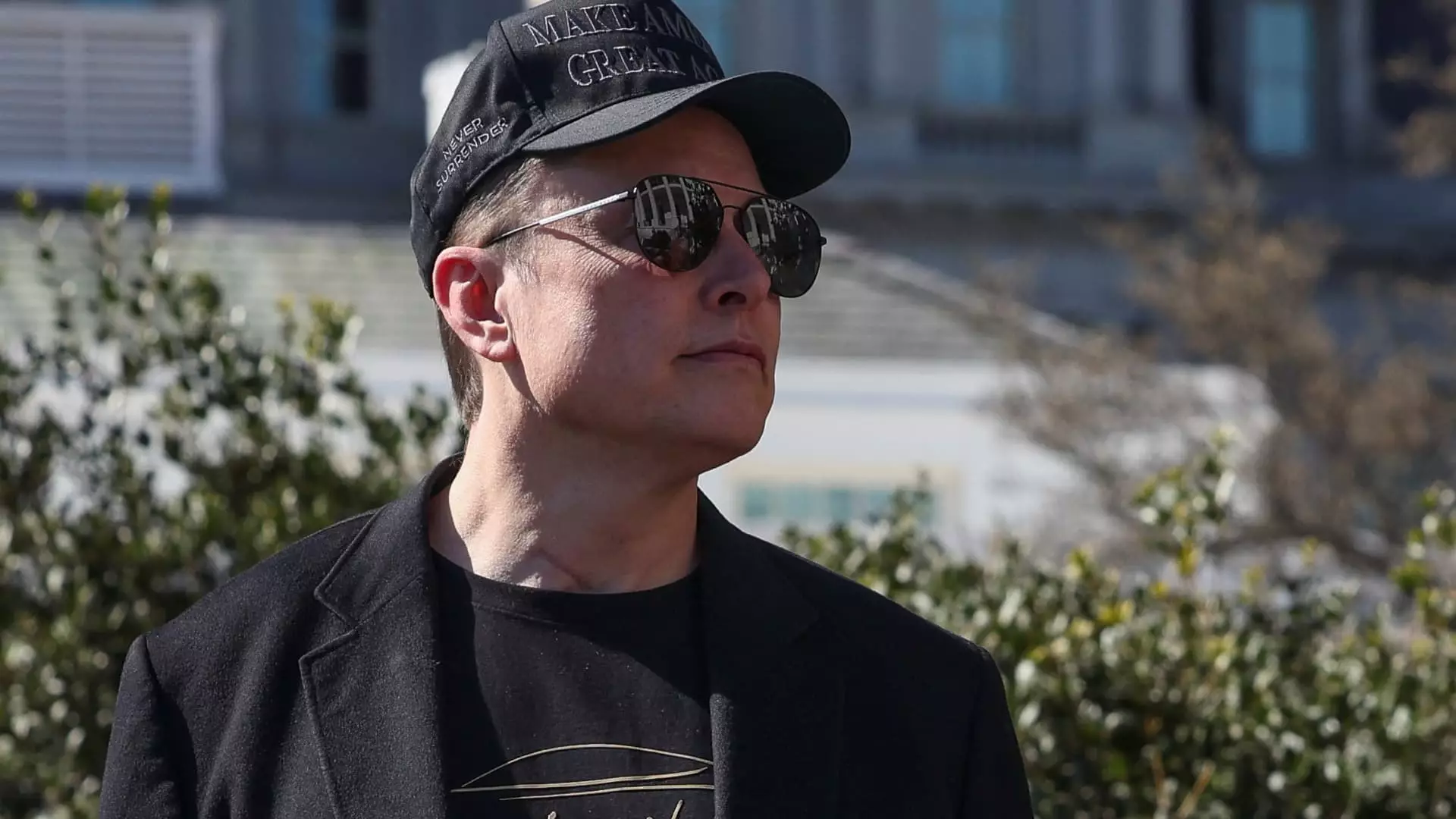Tesla’s first-quarter earnings report for 2025 reveals a shocking crash that has sent ripples through the automotive and tech industries. The company reported adjusted earnings per share of just 27 cents, well below the anticipated 39 cents. Similarly, the revenue brought in at $19.34 billion showcased a staggering decline from the expected $21.11 billion. In this tumultuous quarter, total revenue dropped 9% year-over-year, while automotive revenue plummeted by a jaw-dropping 20%. As we dissect these figures, it’s clear that this is not just a minor setback—it’s a fundamental red flag for a company that prides itself on being at the forefront of the electric vehicle (EV) revolution.
The Fragile Market: Factors Behind the Decline
There are several compounding factors contributing to Tesla’s poor performance this quarter. First and foremost, the firm cited the necessity of updating production lines across its factories for the new iteration of the popular Model Y SUV. This transition could be interpreted as a positive move for sustaining product competitiveness but highlights Tesla’s vulnerability in adapting to market demands swiftly. Meanwhile, ongoing pressures from lower average selling prices and increased sales incentives have eroded revenue margins, resulting in a calamitous net income drop of 71% to $409 million—down from $1.39 billion the previous year.
What’s even more disconcerting is the influence of external political factors. Tesla operates in an increasingly precarious environment, with rising tariffs that threaten to spike costs for essential production materials. CEO Elon Musk’s involvement in President Donald Trump’s administration, particularly in efforts to streamline federal regulations, may seem politically astute. Still, it raises troubling questions about the company’s strategic direction and whether it is losing focus on its core mission to lead the electric vehicle market.
Investor Sentiment Deteriorates: 2025 Guidance in Jeopardy
As if things couldn’t get worse, Tesla has opted to refrain from issuing optimistic growth forecasts for the fiscal year. Instead, the company indicated it would revisit its 2025 guidance in its Q2 update, adding to investor anxiety. With its shares down a staggering 41% already in 2025 and the stock suffering its most substantial drop since 2022, one can’t help but wonder if Tesla is operating on borrowed time.
The volatile stock market reaction provides a glimpse into investor sentiment; shares climbed nearly 5% post-earnings, largely due to external factors such as Fed Chair Jerome Powell’s continued tenure. But this fleeting increase seems insufficient to hide the unraveling facade of a once-dominant player in the electric vehicle sector.
Competitive Dynamics: How Is Tesla Keeping Up?
Tesla’s troubles are compounded by the increasing competition, particularly in China, where low-cost rivals are outpacing the company in sales and innovation. The once unassailable lead Tesla held has been severely eroded, prompting concerns about its market position. Moreover, the company’s laggard status in the burgeoning robotaxi market, dominated by Alphabet’s Waymo, adds another layer of apprehension for investors and stakeholders alike.
While Tesla is emphasizing its plans to launch a driverless ride-hailing service in Austin, Texas, this seems more like desperation than a well-timed strategy. The persistent challenges in implementing these ambitious tech solutions underscore a worrisome gap between vision and execution, raising questions about whether Tesla can maintain its status as a market leader.
Looking Ahead: Investment in AI and Energy Solutions
In the face of adversity, Tesla has pointed to its investments in artificial intelligence and energy generation as a potential catharsis. The energy division saw a significant revenue jump to $2.73 billion, framing itself as a leader in stabilizing the grid and meeting energy demands. However, reliance on foreign suppliers for these products raises questions about supply chain stability. The volatile international landscape does not lend itself to reassuring forecasts, especially as environmental policy intensifies.
Still, the notion that Tesla will face a renaissance through AI deserves scrutiny. This investment, accompanied by the $595 million boost from environmental regulatory credits, merely serves as a temporary band-aid on a wound that is growing larger. The question of whether these efforts will yield meaningful long-term growth for the automobile sector remains unanswered.
In the end, Tesla’s first-quarter report is not just troubling for investors; it poses a broader concern for the future of electric vehicles. The era of easy growth may well be over, and the current trajectory suggests a storm on the horizon. It seems that even a company as revolutionary as Tesla is not impervious to the vagaries of market dynamics and political headwinds.

